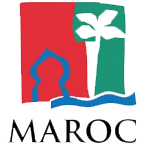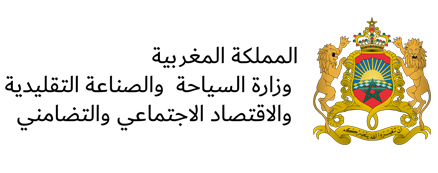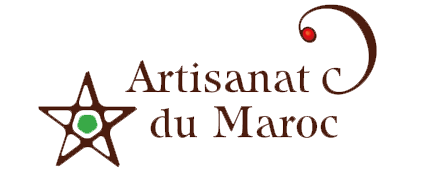The History of Morocco
The History of Morocco
The history of human habitation in Morocco spans since the Lower Paleolithic, with the earliest known being Jebel Irhoud. Much later Morocco was part of Iberomaurusian culture, including Taforalt. It dates from the establishment of Mauretania and other ancient Berber kingdoms, to the establishment of the Moroccan state by the Idrisid dynasty followed by other Islamic dynasties, through to the colonial and independence periods.
Archaeological evidence has shown that the area was inhabited by hominids at least 400,000 years ago. The recorded history of Morocco begins with the Phoenician colonization of the Moroccan coast between the 8th and 6th centuries BCE, although the area was inhabited by indigenous Berbers for some two thousand years before that. In the 5th century BCE, the city-state of Carthage extended its hegemony over the coastal areas. They remained there until the late 3rd century BCE, while the hinterland was ruled by indigenous monarchs. Indigenous Berber monarchs ruled the territory from the 3rd century BCE until 40 CE, when it was annexed to the Roman Empire. In the mid-5th century CE, it was overrun by Vandals, before being recovered by the Byzantine Empire in the 6th century.

The region was conquered by the Muslims in the early 8th century CE, but broke away from the Umayyad Caliphate after the Berber Revolt of 740. Half a century later, the Moroccan state was established by the Idrisid dynasty. The Saadi dynasty ruled the country from 1549 to 1659, followed by the Alaouites from 1667 onwards, who have since been the ruling dynasty of Morocco.
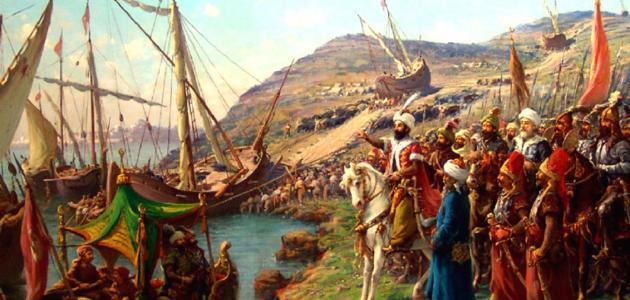
EARLY HISTORY
• 5000 BC : Sahara, Mediterranean, and indigenous peoples merge into the Amazigh (Berber) tribes.
800 ( BC ) : Phoenicians from Eastern Mediterranean establish Tinjis (Tangiers).
• 587 ( BC ) : According to legend, Jews arrive from Land of Israel, After the 1st destruction of the temple by the Babilonais king Nabodakh Nasr 1.
• 300 ( BC ) : Roman influence begins although they meet resistance from the people they term Berbers (Barbarians), and they established the çity of Volubilis in Morocco.
* 25 ( AD ) : Romans appoint a Romanized Berber, Juba II, king of North Africa.
Juba marries the daughter of Mark Antony and Cleopatra.
Roman influence increases with development of roads, science, vineyards, and the olive oil industry.
• 100 ( AD ) : First evidence of Jewish presence suggests sizeable Jewish Berber community.
• 200 ( AD ) : Roman influence declines due to Berber rebellions.
429 ( AD) : Germanic tribes Vandals and Visigoths gain control on coasts.
533 ( AD ) : Byzantines eject last of the Vandals.
Morocco remains largely controlled by local Berber tribes.
• 581 ( AD ) : Jews flee to Morocco due to persecution in Spain.
Many Berber tribes convert to Judaism.
Jewish communities exist throughout the country.
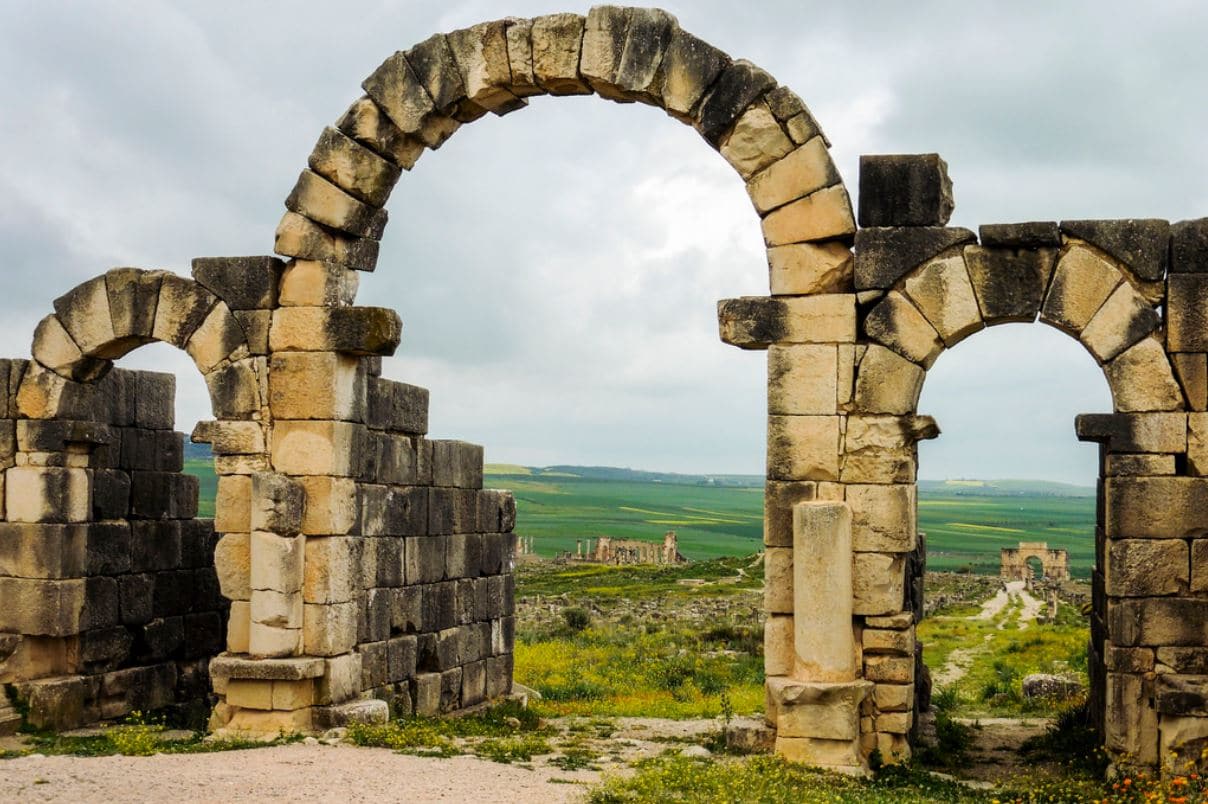
MOROCCO BECOMES MUSLIM
• 632 The prophet Muhammad, founder of Islam, dies.
* 662 Ummayad Arabs invade and introduce Islam and Arabic. They intermarry with locals. Berbers eventually defeat Ummayads but continue to embrace Islam.
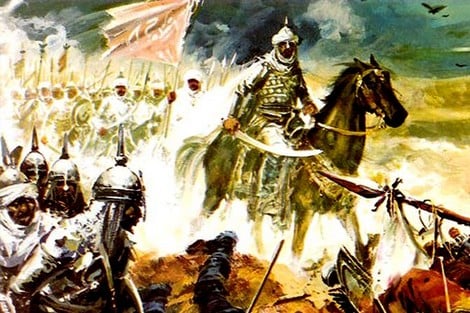
THE IDRISID DYNASTY
• 788 : The Idrisids become Morocco’s first great Islamic dynasty.
* 792 : Idriss II establishes Fes as the first imperial capital.
Idrisid dynasty spreads into Europe, especially Spain.
• A golden age for Jewish economic, cultural, and religious achievement.
Idriss II invites Jews to live in Fes.
Strong ties with Spain. Many Moroccan Jews, including leading thinkers, leave for Cordoba in Spain.
Two-way traffic; Spanish Jews also move to Morocco.

THE ALMORAVID DYNASTY
• 1062 : Berber Almoravid dynasty establishes royal capital in Marrakech.
* 1069 : Almoravids conquer and rebuild Fes.
Almoravids also control much of North Africa and the Andalusian region of Spain.
• Jews continue to enjoy economic opportunities and connections with sultans.
Strong Jewish communities in Fes, Marrakech, and Meknes.
• 1121 Berber Almohad spiritual leader, Ibn Tumart, launches a rebellion and condemns Almoravids for tolerance of wine and music.
Almohad stronghold in Atlas Mountains.
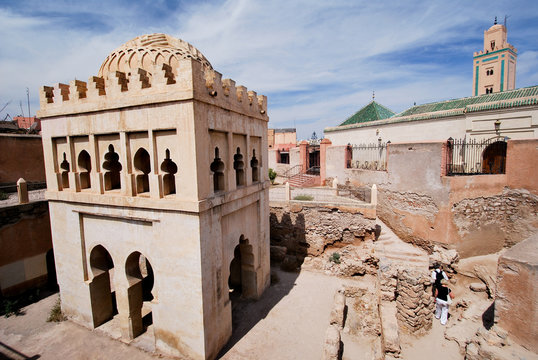
THE ALMOHAD DYNASTY
• 1147 Almohads in control after defeating Almoravids.
They destroy and then re-design and rebuild Marrakech.
Rabat is made the royal capital.
Almohads build the Hassan Tower in Rabat, Koutoubia Mosque in Marrakech, and Giralda Tower in Seville (Spain).
• Many Jews are forcibly converted to Islam, flee, are expelled, or killed.
Almohads destroy synagogues and plunder Jewish communities.
Leader of Fes Jews, Rabbi Judah HaKoken ibn Shushan, is buried alive for refusing to convert to Islam.
* 1168 : Maimonides, who moved to Morocco to escape persecution in Spain, flees Morocco for Holy Land and Egypt.
* 1189 : All Jews, including converts, are forced to wear distinctive signs.
• 1199 Almohad power at peak. They control vast areas from Tripoli to Spain.
1212 Almohads weakened after suffering major defeat by Christians in Spain.

THE MERENID DYNASTY
• 1269 Merenid (Berber) dynasty ousts Almohads.
Moroccan control over Spain is now a thing of the past.
• Jews begin to return to Morocco from Spain and elsewhere.
• Fes again is the royal capital.
Bou Inania madrasa built in Fes.
• 1275 Merenid sultan intervenes to stop pogroms.
The first Jewish quarter (mellah) is established near the royal palace in Fes.
Jewish community flourishes.
Jews are prominent in trade; Aaron Ben Matta is sultan’s prime minister.
• 1492 Christians complete reconquest of Spain and begin Inquisition.
• Massive influx to Morocco of Spanish Jews and Marranos (Jews forced to convert to Christianity).
Those expelled from Spain (known as the megorashim) gradually become dominant in Morocco’s Jewish community, especially in Fes.
Moroccan-Jews speak Haketia (Judeo-Spanish), a blend of Spanish, Hebrew, and Arabic.
• 1497 Portuguese occupy Morocco’s ports.

THE SAADIAN DYNASTY
• 1525 Saadian Berbers battle Portuguese and establish a dynasty.
Marrakech becomes the royal capital.
Sugar and salt trade booms.
Saadian Berbers establish opulent tombs to bury their rulers and the El Badi palace.
• Jews recognized as dhimmi, protected non-Muslims subject to special tax.
Jews are heavily involved in trade and are advisers to sultans.
Jewish quarter (mellah) established next to palace in Marrakech.
New mellahs formed in Rabat, Meknes, and elsewhere.
European Jews settling in Morocco.
• 1578 At the Battle of the Three Kings, Saadians defeat Portuguese and oust them from Morocco.
• Moroccan Jews celebrate Saadian victory with special Purim-like festival.

STILL RULING TODAY: THE ALAOUITE DYNASTY
• 1660 The Alaouites from the Sahara, descendants of the Prophet Muhammad, begin a dynasty that remains in power today.
1672 Moulay Ismail, a brutal, powerful Alaouite sultan, brings piracy under his control and builds an elaborate palace in Meknes.
• Jewish economic and diplomatic influence continues.
• 1727 After Moulay Ismail’s death, there is a period of anarchy and uncertainty.
1789 Yazid begins rebellion against his father, Sultan Mohammed Ben Abdallah.
• Jews of Tetuan refuse important loan to Yazid.
1790 Yazid comes to power and leads murder, plunder, and rape of Jewish community, especially in Tetuan.
1792 New king stops violence against Jews.
1808 Formerly open Jewish mellahs turned into closed ghettos.
• 1840 Increasing influence of European powers in Morocco.
• 1862 Alliance Israelite Universelle introduces secular French education to Jews.
Jewish population: 200,000.
Jewish community is dominated by wealthy families and more impoverished masses.
Plagues ravage increasingly overcrowded Jewish quarters.

UNDER THE COLONIAL POWERS
• 1912 France establishes protectorate over much of Morocco.
• Pogrom in Fes kills over 100.
• Spain rules north of the country; Tangiers is international zone.
Rabat becomes the capital of French Morocco.
Casablanca develops into major North African city.
• Modernization of country sees growth of educated Jewish middle class.
1930s Jewish position in Morocco vulnerable with rise of European fascism and Arab revolt in Palestine.
• 1940 French Morocco under Vichy (Nazi collaborators) rule during World War Two.
• Anti-Semitic laws passed.
Foreign Jews placed in labor camps.
King Mohammed V credited with refusing to hand Moroccan Jews over to Nazis.
• 1942 Anglo-American invasion (Operation Torch) defeats Vichy forces.
• Moroccans attack Jews throughout the country.
• 1943 De Gaulle and Free French take control over French Morocco.
• 1948 Jewish population: 271,000.
Moroccans protesting new State of Israel kill 43 Jews.
Mass immigration to Israel begins.
1950s Moroccan nationalist unrest threatens Jews.
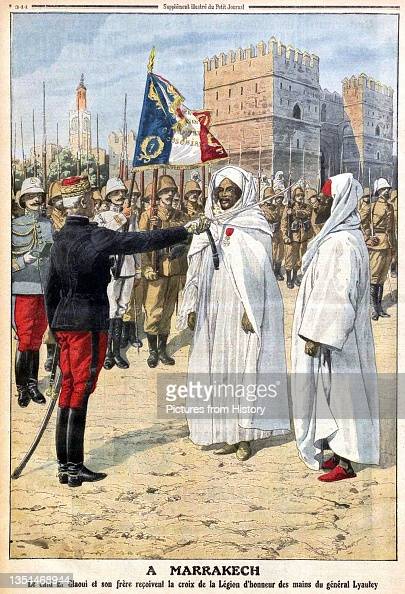
INDEPENDENCE AND EMIGRATION
• 1956 Moroccan independence. Muhammad V returns as king.
• Jews forbidden from emigrating.
1959 Zionist activity banned in country.
Nonetheless, clandestine emigration to Israel, France, and Canada increases.
• 1962 King Hassan II takes power and establishes Morocco as constitutional monarchy.
The Years of Lead: Hassan dissolves parliament, and squashes dissent.
• 1970 Jewish population has dropped to 42,000.

1975 The Green March
• 1975 The Green March: Morocco asserts control over Western Sahara leading to war with locals.
1991 Ceasefire in Western Sahara but no resolution of issue.
1993 Hassan II Mosque, the largest in Africa, built in Casablanca.
1999 Mohammad VI succeeds to throne and promises reform.
2011 Arab Spring leads to protests but does not shake regime.

MOROCCO OF TODAY
• Population of Morocco: 36 million.
• Jewish population: 2,500.
King and government support Jewish community, rebuild synagogues, and welcome visiting Jews, including from Israel.






